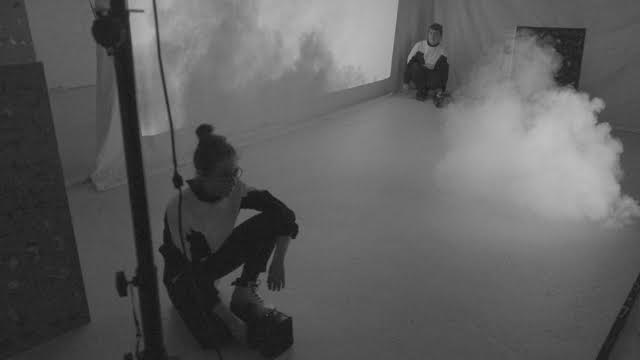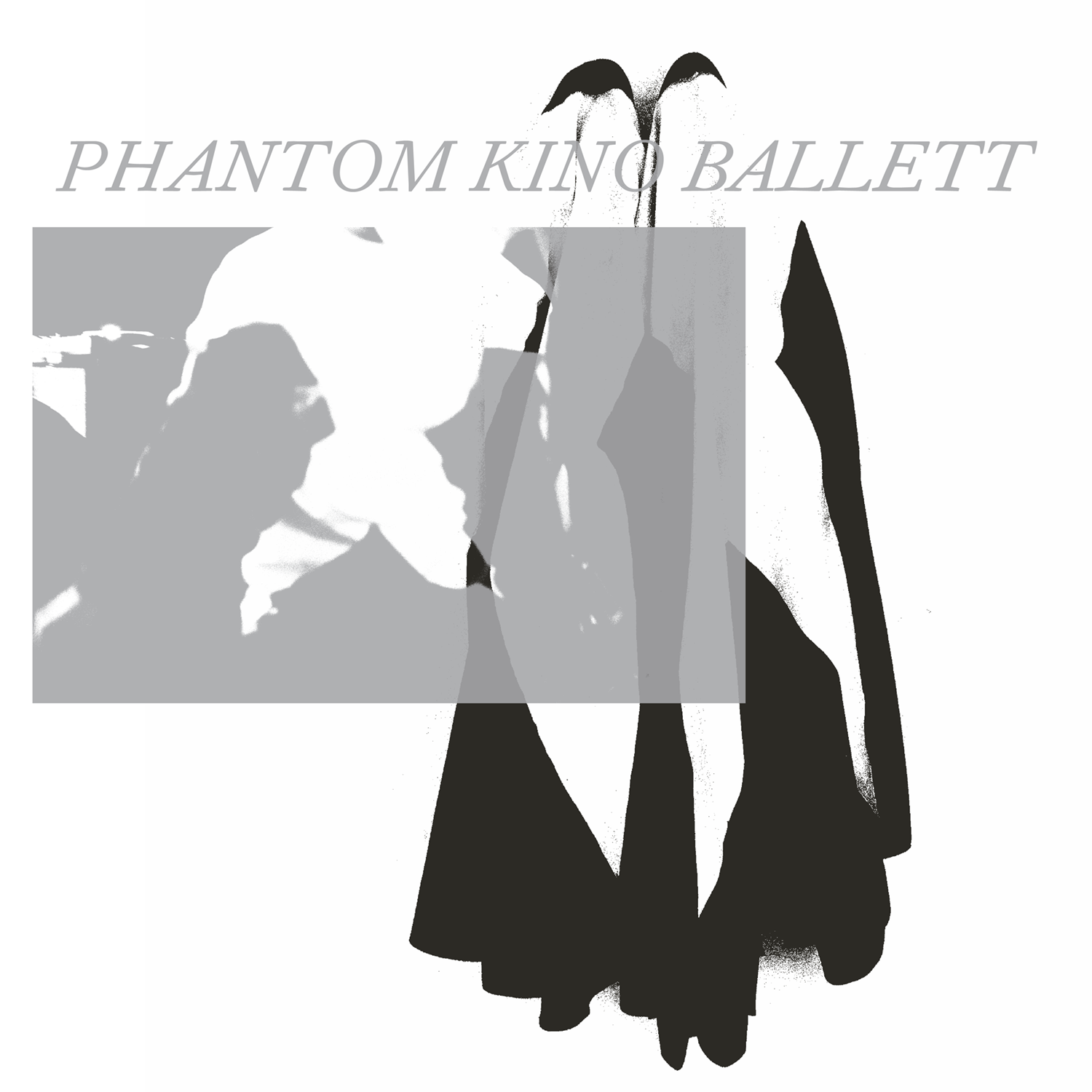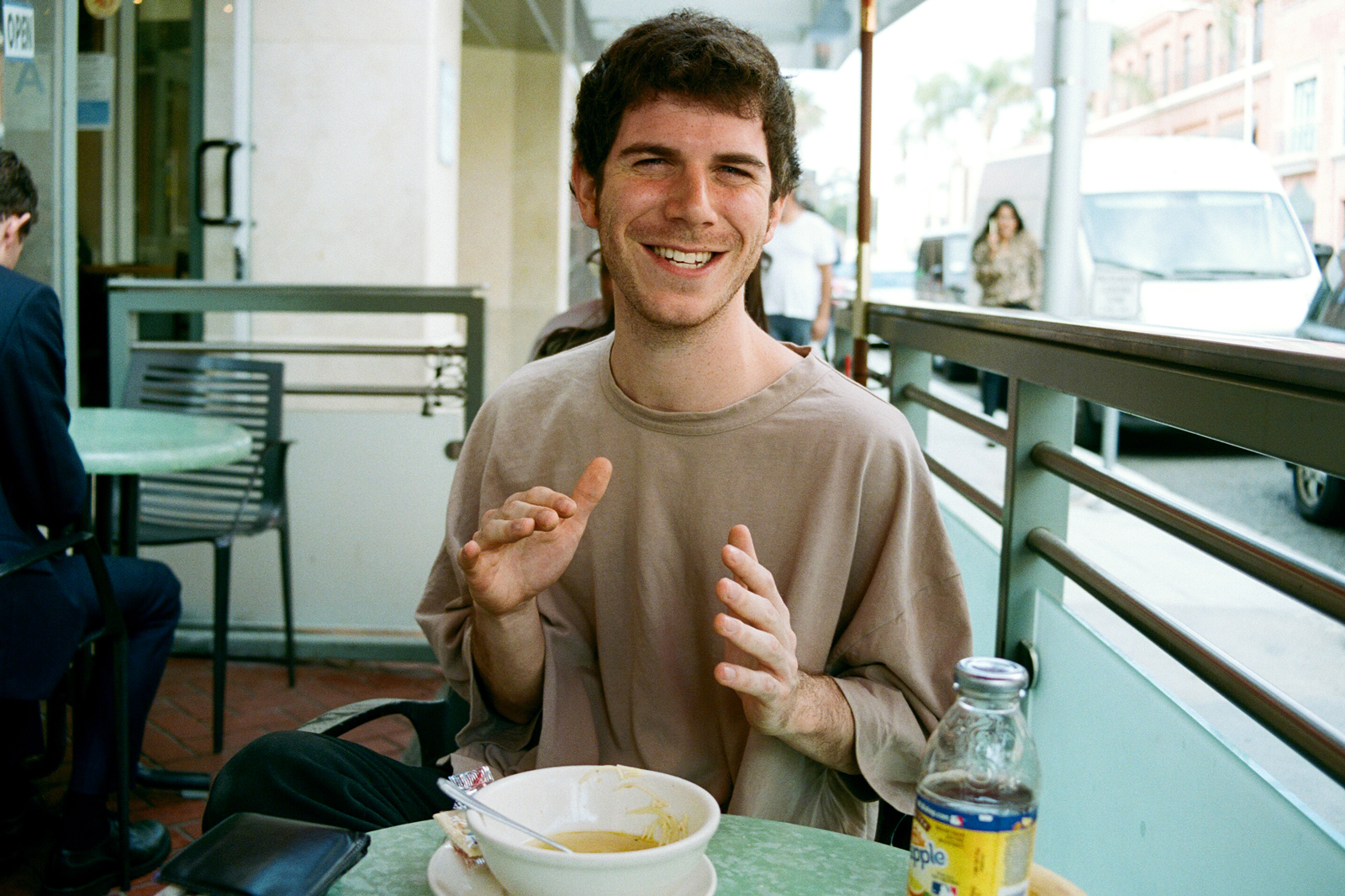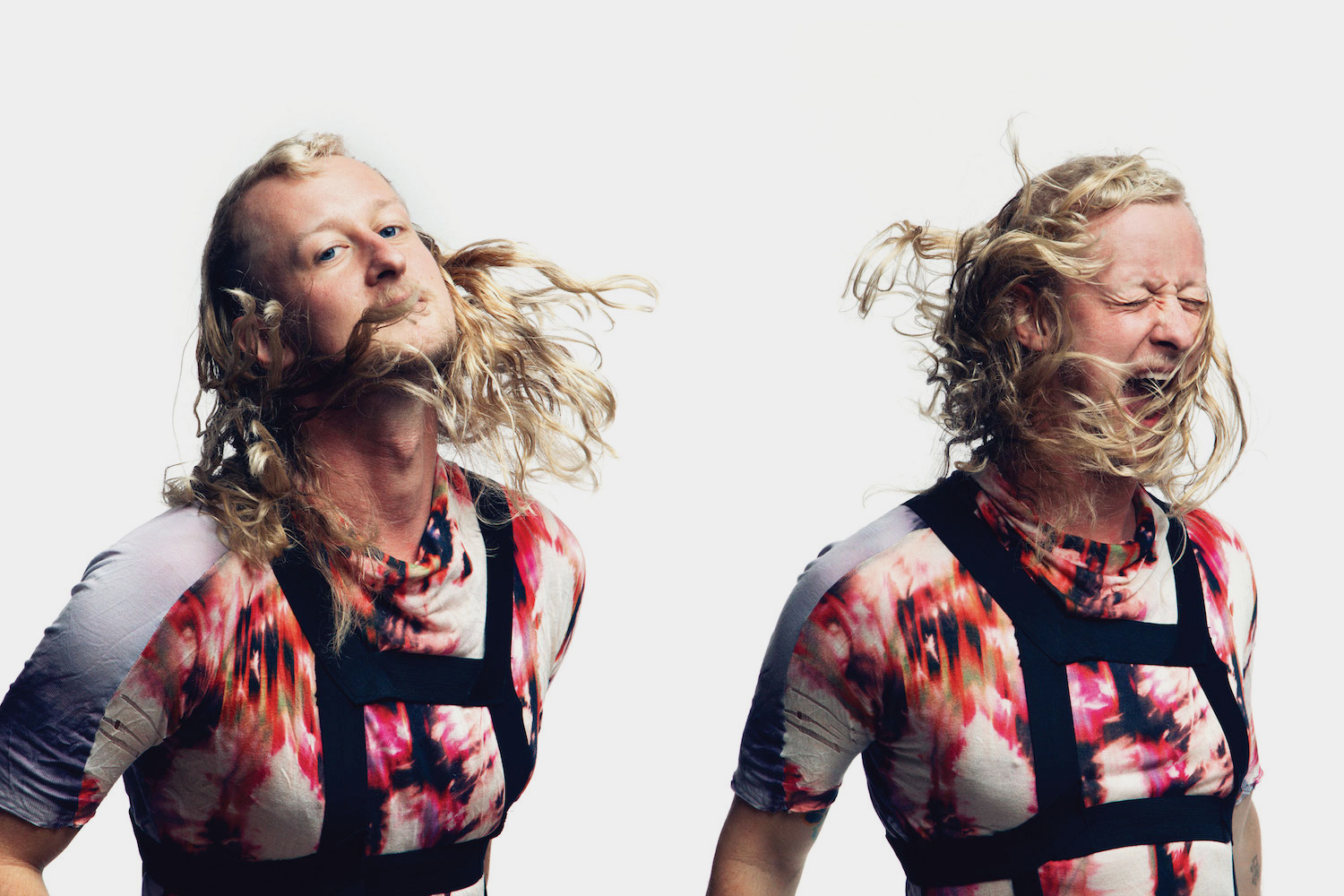Text: Alec Coiro
Photo: Thomas Venker
With Phantom Kino Ballett, Lena Willikens and Sarah Szczesny have conjured a single work of art out of many artforms. Part performance, part video, part music — to name just a few of the parts — Willikens and Szczesny’s work challenges the audience and at the same time blankets them in experience. The artist have a very particular way of describing their particular art form, and we were lucky enough to talk to them in advance of their New York presentation on September 19th at Issue Project Room.
The “Kino” and “Ballett” in the name seem to very aptly evoke the cinema and performance elements that make up the many and varied media the work employs. What can you tell us about the “Phantom” aspect of the title?
All three terms were chosen very intuitively and associatively when we started Phantom Kino Ballett. And all three terms were chosen as a variable, blank space, as a wild card for a morphing project. We consider Phantom Kino Ballett as a cabinet of curiosities, where we can live out our fandom and admiration for music, fine arts, comics, literature, cartoons, movies…(basically all kinds of art) and especially personalities we admire. These characters speak through the Phantom. A Phantom can work like a medium but also stands for a state of
non stability and transition. Like using a dark techno track, sample a hysteric dialogue scene of a movie, eventually use an old Japanese animation we adapt and transform visually, or playing a strong quote by an artist we admire. Initially the Phantom came actually from our first collaborations, Lena’s EP, “Phantom Delia” and the video series, “The Phantom Delia,” including clips to each track of the EP. The cover drawing for the EP by Sarah contains dancing figures which later emerged to a costume (and are also visible in Lena’s stage outfits, the so called „Phantom Shirts“) where the figure dissolved with the owner of the shirt. This costume plays a big role in the performance. We can disappear behind those Phantom Shirts like a puppet master behind his puppet. Wearing those bodies on our bodies. By moving our bodies the Phantoms become alive… Which raises the question: which body is controlling the other here? Ideal wise the borders dissolve…The term, “Kino” we chose because our first performance happened to be in a Cinema. And the term, “Ballett” came from the choreographic character… But nothing is meant to be like it is. We often say you could replace the words or play with the title. We already did a version at a festival about Conrad Schnitzler named, “The Phantom Con Ballett.”
What is the effect on the audience of such immersion in a multiplicity of media? I suppose it’s different for every audience, but do you have an overall intended effect, or a general impression of how audiences absorb your work?
Yes, we have been experiencing very diverse reactions. As Phantom Kino Ballett works also as a kind of anti-narrative radio play and contains a lot of dialogues, there is also a contextual level (in german and english) which presuppose your understanding of the languages. But if you don’t – there is also an abstract level you can relate to and you can just focus on the sound, on the music, the rhythm of the speakers and of course the moving images, the paintings or us moving through the installation.The different layers have a lot to do with (extended) painting in general. It can probably be overstraining for some audiences and might have a delirious effect too – some people in our audience put on their sunglasses or even closed their eyes and in Tokyo we saw people passing out during the performance. We are more than happy if things are a little “too much“ and overwhelming for the audience, we surely don’t want to just be pleasant. We also think that we can demand some concentration from the audience. It is ok if you don’t understand everything right away, let the Phantoms breath.
I understand that a trip to Kyoto was very inspirational for the Commend See project. What can you tell us about that trip and what special things did you discover in Kyoto?
Kyoto and the Kansai region with our favorite city Osaka has an very interesting music scene. We were looking through all the amazing record stores and went to a lot of concerts and parties. We visited Osaka a lot to meet musicians like Koshiro Hino (YPY), KOPY or Rie Lambdoll (which performed solo and with her band Synth Sisters ) and visit their concerts. They all welcomed us and gave us lots of tips what to explore in the region, especially Koki Emura (owner of EM Records) and Toshio Kajiware (aka DJ Bing, owner of the record shop Hitozoku and part of the art collective Antibodies) had a big impact on us. In Kyoto we further discovered the avant garde Manga artist Takashi Nenemoto, who was a great inspiration for some new animation of our video. Beside the contemporary scene we were also interested in Traditional Arts. We went to see No- Theatre plays in Kyoto and Bunraku Puppet plays in Osaka. On top of that all, Lena produced a new track named “Alte Brise“ which is now part of the latest version of the “Phantom Kino Ballett“ mix. And the b-side of the cassette edition of the release on Commend See, named “Identikit Transkript“, exists mostly of field recordings made during our time in Japan.
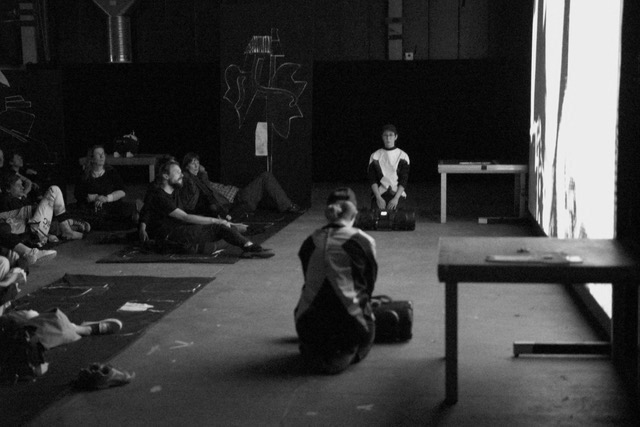
We are more than happy if things are a little “too much“ and overwhelming for the audience, we surely don’t want to just be pleasant.
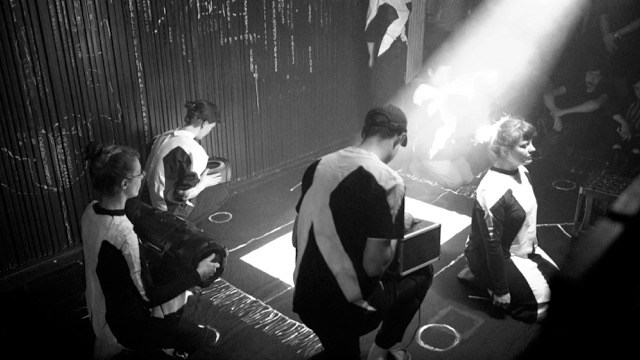
Commend See pairs an artist responsible for “Sound” with an artist responsible for “Object.” How do you interpret these two terms “Sound” and “Object,” and to what extent were you concerned with using the combination of “Sound” and “Object” to replicate the experience of seeing the “physical manifestation” of Phantom Kind Ballett live?
This description is actually wrong and misleading – but that does not matter. We not only don’t mind, we actually welcome any confusion! Although Lena is generally a Dj and producer and Sarah a visual artist – at Phantom Kino Ballett we don ‘t line borders between the artistic fields. We did all the sound part together as well as the visual part is created by both artists. One important part of the live performance is the stage arrangement and the site specific installation with which we always try to include and not exclude the audience. To achieve this state, we, the performers wander through the sitting recipients and play sounds and snippets from portable sound sources. One can say the sound becomes also an object or part of the installation as the paintings (the art-objects) disappear under the sitting audience. The release on Commend See became an object and artifact of a certain state, we had to draw out what would be involved. We decided not to release the video alongside, instead the idea was to separate the sound from the visuals and create a tiny documentation and a poster as the visual component. We felt lucky to have the Commend See/RVNG Intl. Art department Will Work For Good on our side, as lovers of the label aesthetics we were glad to give our ideas in the trustful hands of Karisa Senavitis and Kevin O’Neill.
What can you tell us about your collaborative process both in terms of how you outline a project and the process of creating and realizing it?
As already described, it is a very processual work itself. Phantom Kino Ballett became for us like a free space, a zone where we create things and try not to get bored. After almost each performance new ideas are evoked naturally. Lately we extended the project during a tribute night for Conrad Schnitzler for which we invited other artists to join the performance as a new Phantom Force and Séance. We surely will follow that path.
How did you become aware of agisra e.V.?
A friend who is a psychologist helping refugees with traumas gave us the hint to follow agisra e. V. in our hometown of Cologne (Lena only recently moved to Amsterdam). At agisra they have qualified female specialists, most of whom have migration experience themselves. Since the 1990s the organisation has been a counseling and information center for migrant women, which have to cope with problems due to the situation in the country of origin, their migration or their life situations.This organisation provides psychological counseling and support to all migrants and refugee women regardless of their social and ethnic origin, religion, age, sexual orientation and residence status.
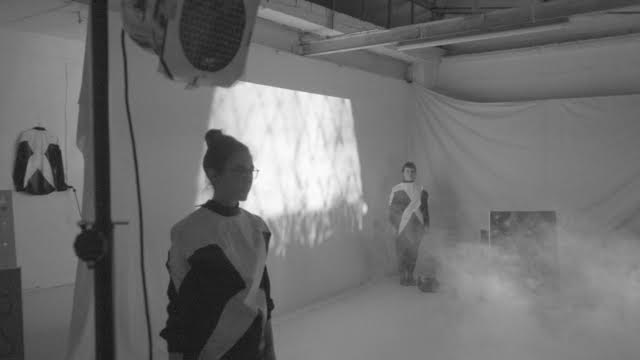
We can disappear behind those Phantom Shirts like a puppet master behind his puppet. Wearing those bodies on our bodies. By moving our bodies the Phantoms become alive... Which raises the question: which body is controlling the other here?
